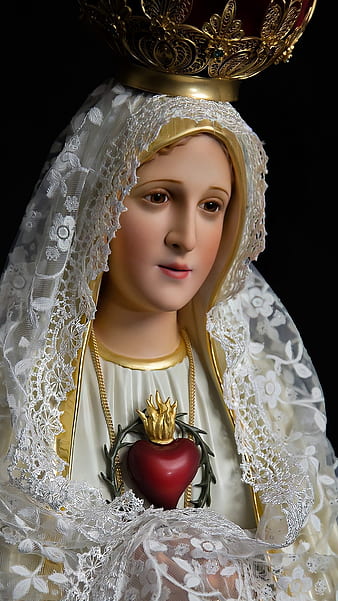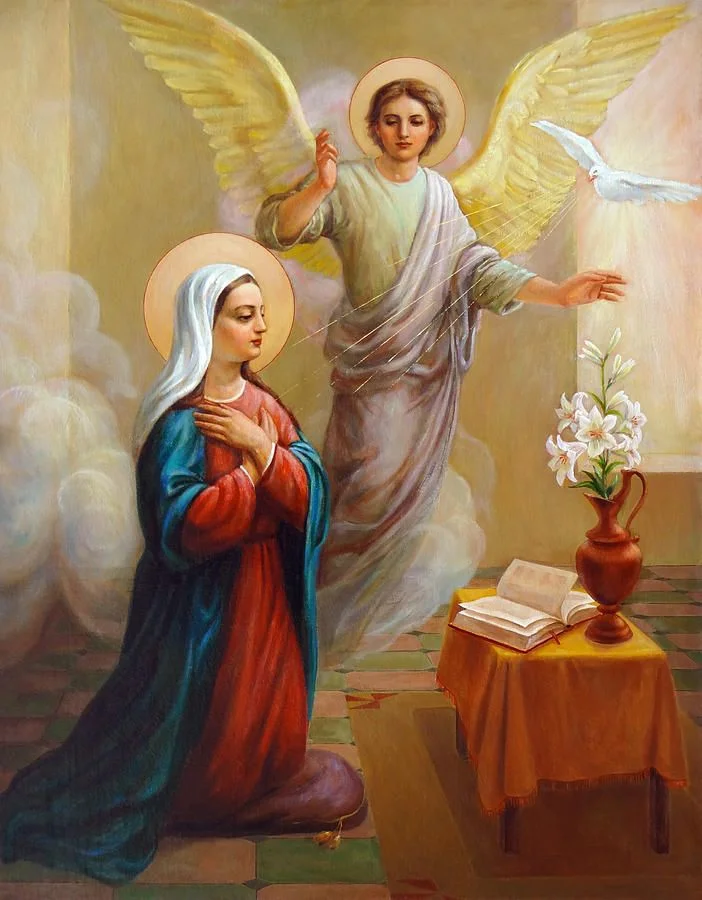Mary: A Model of Faith for Believers

Updated at: 2025-06-05 13:41:38 (6 months ago by Melkisedeck Leon Shine)
```htmlMary as a Paradigm of Faith: A Theological Exploration
This essay examines the role of Mary, the mother of Jesus, as a model of faith within Christian theology. Key concepts explored include theosis (deification or divine likeness), kenosis (self-emptying), intercession (prayer on behalf of others), and the concept of Mary as a type (a prefiguration of a later reality, in this case, the Church).
The Annunciation and the Virtue of Kenosis: The Annunciation (Luke 1:26-38) presents Mary's initial encounter with the divine. Gabriel's announcement of her conception of Jesus, a son of God, is met not with fear or rejection, but with humble acceptance. Mary's response, "Behold, I am the handmaid of the Lord; let it be to me according to your word," exemplifies kenosis. She willingly relinquishes her own desires and plans, submitting completely to God's will. This act of self-emptying serves as a powerful model for believers, reminding us that authentic faith requires a willingness to surrender to God's sovereign plan, aligning our individual desires to the divine will, a critical component of spiritual growth and transformative living, as outlined by various spiritual formation models. This highlights the importance of self-awareness and a discerning approach to recognizing and responding to God's call in one's own life.
The Magnificat: A Proclamation of Theosis: Mary's Magnificat (Luke 1:46-55) is a hymn of praise revealing her profound understanding of God's power and grace. Her words reflect a deep awareness of God's plan of salvation, highlighting the reversal of societal power dynamics. The Magnificat's emphasis on God's power to exalt the humble and to bring down the mighty serves as a powerful testament to God's transformative power, illustrating the concept of theosis – the process of becoming increasingly like God. This active participation in God's redemptive work is an inspirational model for Christians, who are called to participate in God's plan in their daily lives. Furthermore, the Magnificat embodies a model for faithful living, emphasizing gratitude, humility, and a recognition of God's active involvement in the world.
The Wedding at Cana: Intercession and Collaboration with Christ: The miracle at Cana (John 2:1-11) depicts Mary's role as intercessor. Her intervention on behalf of the wedding guests demonstrates her understanding of Jesus' divine power and her trust in His ability to provide. Her simple statement, "They have no wine," initiates a divine response. While some interpretations might portray a passive role, a deeper theological lens suggests an active collaboration with Christ in His ministry. This illustrates the power of faithful intercession and the importance of prayerful engagement with God on behalf of others, mirroring the relational approach in pastoral care and counseling, where empathetic listening and collaborative problem solving are crucial.
The Crucifixion: Endurance, Trust, and the Motherhood of Believers: Mary's presence at the foot of the cross (John 19:25-27) offers a profound lesson in unwavering faith amidst suffering. Her enduring loyalty to her Son, even in the face of immense grief, demonstrates remarkable fortitude and reliance upon God's unwavering love. This emphasizes the importance of perseverance during life's trials, teaching believers to find strength through trust in divine providence. Her role as the mother of believers, as Jesus entrusts her to John, underscores the role of the Church as a supportive and nurturing community, supporting one another through times of grief and challenge.
The Assumption: Eschatological Hope and the Promise of Resurrection: The Assumption of Mary (a doctrine affirmed by the Catholic Church) signifies her bodily and spiritual ascension into heaven. This event speaks to the ultimate triumph of faith and hope in the face of death, offering a powerful eschatological message of resurrection and eternal life. It reflects the anticipation of believers towards their own union with God and the fulfillment of God's promises. This doctrine inspires believers to seek a life of holiness and virtuous living, striving toward achieving union with God.
Conclusion and Recommendations: Mary's life, as presented in scripture and theological tradition, offers a comprehensive model of faith for all believers. Her obedience, humility, intercession, and steadfast trust in God in the face of suffering inspire us to deepen our relationship with Christ and to strive for a life that reflects his teachings. Further research could explore the comparative theologies surrounding Mary's role across different Christian denominations, analyzing how varying interpretations impact lived faith and community engagement. Analyzing the socio-cultural impacts of the Marian traditions on the lives of believers could further enhance our understanding of the depth and breadth of Mary's influence on Christian spirituality. The practical application of Mary’s example could be further explored through case studies of individuals who have demonstrated similar virtues of faith and perseverance in challenging circumstances. This deeper understanding will provide a clearer insight into how Mary’s model can be effectively applied in contemporary contexts to foster spiritual growth and resilience in individuals and communities.
Reader Pool: Considering the diverse interpretations of Mary's role within Christianity, how might a more nuanced understanding of Marian theology contribute to fostering ecumenical dialogue and collaboration among different Christian traditions?
```


